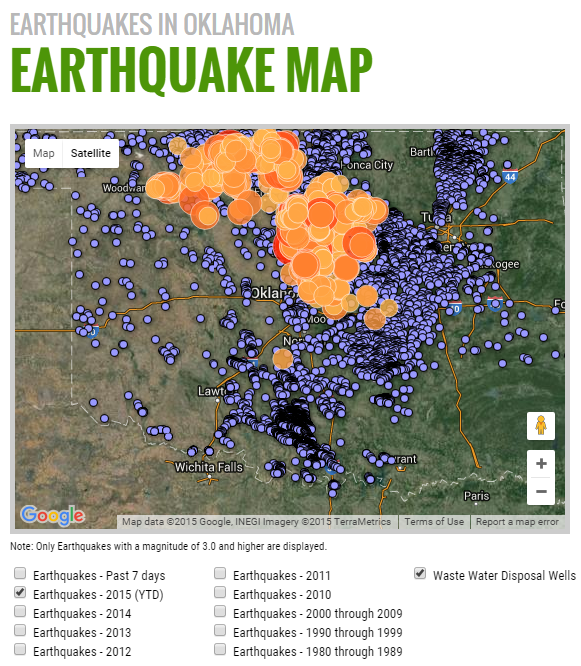StatesFirst Report Covers Effects from Disposal Wells, NOT Hydraulic Fracturing
StatesFirst, a joint initiative led by the Interstate Oil and Gas Compact Commission (IOGCC) and the Ground Water Protection Council (GWPC), has released guidance and findings related to reports of induced seismicity in oil and gas drilling regions.
A total of 13 states partnered in the project, including Oklahoma, where the current average rate of earthquakes is approximately 600 times historical averages. Michael Teague, Secretary of Energy and Environment for the state of Oklahoma, said several states were trying different methods in an attempt to identify the reason for the quakes.
“At this point, the seismologists, have come to the conclusion that these earthquakes really are related to disposal wells,” said Teague in an exclusive interview with Oil & Gas 360®. “Nobody is really sure of the exact aspect, whether it be volume, rates, location, or depth. It’s probably a combination of several of those things.”
 Disposal Well Issues
Disposal Well Issues
The joint report followed through on its disposal well focus, but assured any perceived problems are not widespread. In a press release, StatesFirst explains, “the work group observed that the majority of disposal wells in the United States do not pose a hazard for induced seismicity; however most cases of felt injection-induced earthquake activity has generally been associated with direct injection into basement rocks or injection into overlying formations with permeable avenues of communication with the basement rocks, and in proximity to faults of concern.”
Recommendations
The report repeatedly stressed a clear line of communication between the industry and the public, recommending a state agency that is prepared to issue statements and respond to various questions or concerns.
“Induced seismicity is a complex issue where the base of knowledge is changing rapidly,” said Rex Buchanan, work group co-chair and interim director of the Kansas Geological Survey. “State regulatory agencies that deal with potential injection induced seismicity should be prepared to use tools, knowledge, and expertise… to prepare for and respond to potential occurrences of induced seismicity.”
As any geologist well tell you, not all wells are the same, so the report adds that seismicity risks can be evaluated on a site-by-site status. Each respective state can address protocols through various screening processes – some of which are already being implemented by a handful of the 13 states in the study. Kansas and Oklahoma are just a few who have reduced injection volumes in certain areas and are monitoring the end results.
 Case Examples
Case Examples
The report detailed a March 2014 event in Ohio, when four seismic events cause the Ohio Department of Natural Resources (ODNR) to halt oil and gas operations and conduct an investigation. Upon discovering the operations held a “probable connection” to the seismicity, the Division knew the report would draw media attention. Therefore, the ODNR implemented a plan on delivering the appropriate message and accurately disseminating information to all public outlets. An office of communications was developed for the sole purpose of handling media calls and various coverage.
Another example is the steps taken by Oklahoma, following seismicity increases earlier this year. The state created a site dedicated solely to its seismic studies, designed as a “one-stop approach” for all public information. A handful of government agencies have combined with industry operators to reach a solution on how to reduce regional earthquakes, and Teague said operators have been “really helpful” in providing data to the state geologic survey.
There are more than 30,000 active disposal wells nationwide, according to the report, along with another 151,000 injection wells used for secondary or enhanced oil recovery. The study says “very few” felt semis events, and reducing injection volumes, pressure and rates have been successful in previous tests.
“Overall the risk of induced seismicity for oil and gas operation is still low,” said Rick Simmers, work group co-chair and chief of the Ohio Department of Natural Resources, Division of Oil and Gas Resources Management. Moving forward, the key message identified by the report is for each state to address each issue accordingly and efficiently. “Given the broad geologic differences and diversity that exist across the United States, it would not be appropriate to adopt a “one-size-fits-all” regulatory approach for managing the risk,” it said. “Local conditions must be considered.”

